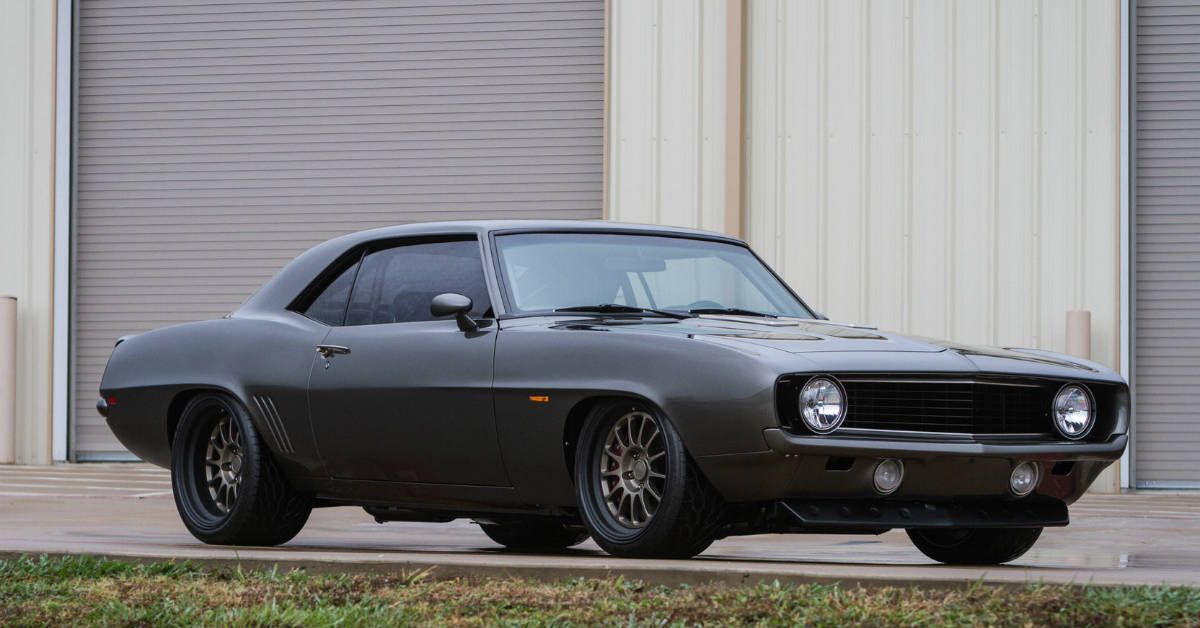To quote that scene in Ford vs. Ferrari where Lee Iacocca was convincing Henry Ford II to go racing, the young generation of the 60s, known as "baby boomers", didn't want to drive their parents' boring 50s cars. They wanted glamour, sex appeal, and they wanted to go fast, but on a budget. Chevrolet had a better idea of that, which was why during that era, the small-sized Nova, the mid-sized Chevelle, and the full-sized Impala, dominated whatever Ford came up with in those categories.
However, in 1964, Ford revealed the Mustang and started a new segment — the pony car. And as we all know, the Mustang was a huge success. Chevy needed a new car to compete against Ford, and in 1966, the Camaro was born. It was lower, longer, wider, and more powerful than the Mustang, and ignited a rivalry that would continue to this day. 54 years after it appeared, the first-generation Camaro remains one of America's most loved cars, and here's why.
8 Hot Wheels Era
Back in 1968, Hot Wheels was introduced by Mattel as a die-cast toy car manufacturer, and their first scale model released to the public was based on the first-generation Chevrolet Camaro.
Dubbed as the Custom Camaro, it formed the "Sweet Sixteen", the first 16 models that Hot Wheels made to the public that was released to kids of that era, and spurred a generation of automotive enthusiasts that began their love for cars by playing these scale models for much of their childhood.
7 Plenty Of Engine Choices
The first-generation Camaro had a lot to offer depending on the type of owners it would have. Whether they were soccer moms or hardcore gearheads, Chevrolet offered plenty of Camaro variants to choose from, which helped it to cater to a wide range of buyers during that era.
You had the RS, the SS, and the Z/28 models to choose from, and there were additional options in between. There were a total of 12 engine options throughout the first-generation Camaro's model life, ranging from a 140 hp 230 cu. in straight-six to the big-block 427 V8 that had 430 hp.
6 Iconic Design
A lot of people would say the best-looking Camaro has to be the first-generation model, as its aggressive styling and even proportions made it look like it was hugging the road, and even earned the nickname "The Hugger".
Maybe that iconic styling was the reason why, when Chevrolet revived the Camaro in 2010, it shied away from the fourth generation's long and rounded design, and went back to the boxy silhouette that resembled the first-generation pony car.
5 Convertible And Hardtop Version
For the past 54 years, the Camaro's configuration has always stayed the same — a 2-door, 2+2 layout pony car that was either available as a soft-top convertible or a coupe hardtop.
What's good is that no matter if it's the base Sport model or the hardcore Z28, both body styles were still offered, and played a big part in the Camaro's appeal for potential buyers during that time.
4 Motorsports Legend
Right from the get-go, the first-generation Camaro made a name for itself in motorsports. Bill "Grumpy" Jenkins won the NHRA Super Stock Championship in 1967 and the Pro Stock class national title in '68 driving his white Camaro.
The car not only excelled on the quarter mile, but also on race circuits, as Mark Donohue raced the Z28 Camaro prepared by Team Penske sponsored by Sunoco in the SCCA, taking 10 wins out of 13 races in the 1968 season to give Chevrolet's first Trans-Am championship.
3 Indy 500 Pace Car
The first-generation Camaro was popular for pacing the Indy 500 field in 1967 and 1969. Perhaps the most famous of them all was the '69 model, as it received a Dover White paint with the Hugger Orange racing stripes.
For the 1969 running of the Indy 500, Chevrolet built a total of 133 pace cars for the event, with 130 replicas used as courtesy cars for VIPs, two as the official pace cars, and one reserved for the winner of the race which was Mario Andretti.
2 Z28
From 1967 to 1969, the Z28 was the performance version of the Camaro, designed to satisfy the rules of the SCCA's Trans Am Series. Featuring a 4.9-liter 302 V8 that put out 290 hp, which was mated to a 4-speed manual transmission.
Furthermore, it had power disc brakes and two wide "skunk" stripes that runs from the hood to the rear trunk lid to distinguish it from other Camaro models.
1 Yenko Camaro SYC
Back then, there was a ruling at General Motors that prevented Chevrolet from installing engines larger than 6.6-liters for their mid-size and small cars. However, Chevy dealers found a way to circumvent that rule by way of the COPO, or the Central Office Production Orders, usually used on fleet and special orders to put in 427 engines in the Camaro.
With L72 engines producing 430 hp, these were the most powerful brand-new Camaros you could buy back in 1969. Don Yenko added special graphics to the sides and hood of the Camaro, and the sYc (Yenko Super Car) lettering on the headrests, which was seen on the 2Fast 2Furious Yenko 427 Camaro that Brian and Roman used at the end of the iconic film.


.jpg)
.jpg)
.jpg)
.jpg)
.jpg)
.jpg)
.jpg)
.jpg)
.jpg)
.jpg)
.jpg)
.jpg)
.jpg)
.jpg)
.jpg)
.jpg)